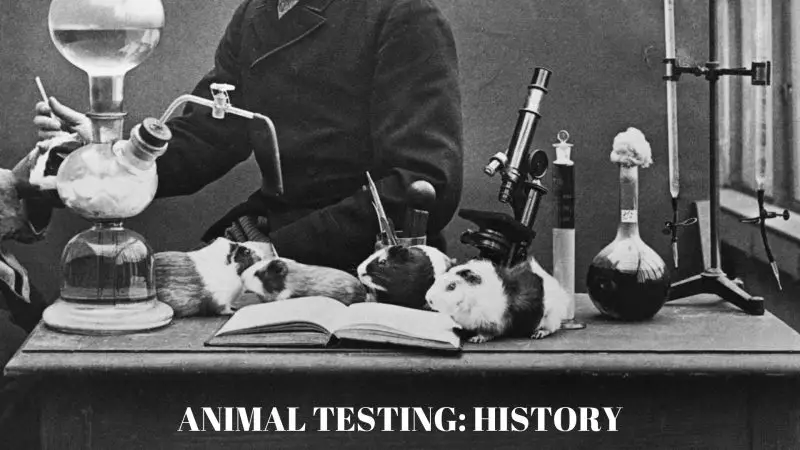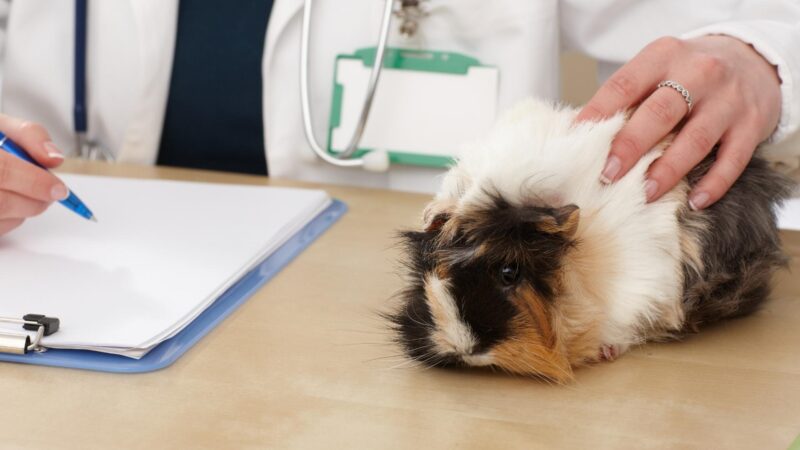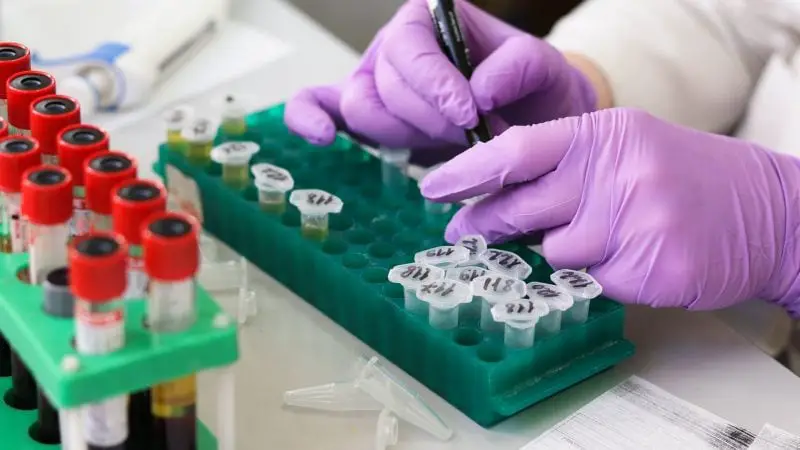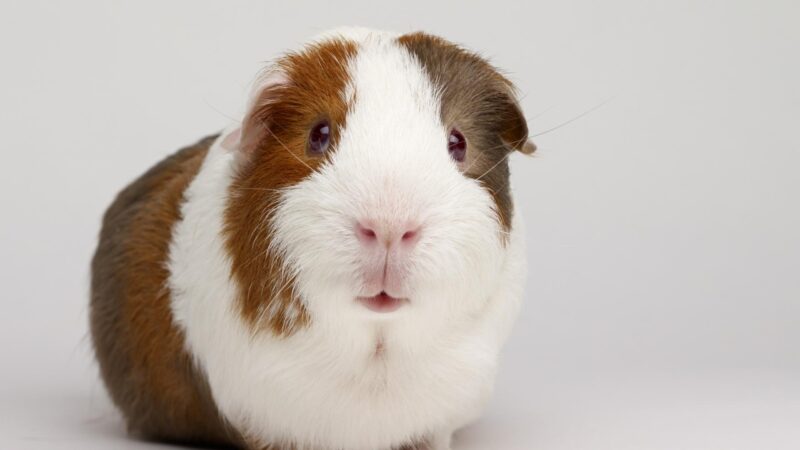Over 26 million animals are annually used for testing in the United States alone. Guinea pigs are just one of the types of mammals from the huge bunch.
But, why guinea pigs are used in research? Guinea pigs are used in research because they are important for the development of science and medicine. Because of the research about guinea pigs, scientists developed vaccines, asthma treatment, and so on. Moreover, they are also used to study auditory systems.
Let’s take a brief journey into the scientific laboratories to find the answers to all of our questions.
Table of Content
Animal Testing | History

Various experiments and research were conducted on living animals since 500 BC. People use other creatures for various health care and commercial reasons. For example, for drug testing and determining the safety and toxicity of various products.
All these experiments are not about gently patting the animal on the head. The majority of them are cruel and, at times, lead to the subject’s death.
Back in 500 BC, such geniuses as Erasistratus and Aristotle dissected animals to find out more about the functioning of living organisms. Even though the researchers agreed that animals as well can feel pain, vivisection hasn’t been banned as it was the only possible way to find out more about the biology and physiology of living creatures.
With the help of animal vivisection, researchers discovered that arteries actually contain blood and not air. Additionally, William Harvey found out that the heart pumps out blood and so on.
In the 19th century, people started massively adopting domestic animals. That was the main reason why a lot of humans began objecting to the cruel experiments on animals. Queen Victoria, for example, became one of the most well-known animal protectors. Then, the first anti-vivisection laws were developed.
In 1956, the principle of the “Three Rs” was formed. It didn’t exactly prohibit the experiments on animals but approved these researches only in case it was the only possible measure.
- Replacement – Trying to find an alternative to a living animal in the conditions of research.
- Reduction – Minimizing the use of the animal’s body.
- Refinement – Making sure that every creature has the best possible living conditions; is treated with respect; ideally, doesn’t suffer.
But all these laws did not mean that animal testing was banned. The research continued. Over the years, animals helped us explore even space. But do all these facts mean that research and tests are justified?
Animal Testing | Pros & Cons

Cons of Animal Testing
Animal testing is just too cruel.
The first argument of all the animal lovers out there. Activists have been spreading horrible photos and videos that prove yet again that animals are certainly not treated well during the experiments.
The creatures suffer from pain, dehydration, allergies, burns, and various wounds. Moreover, there is such a thing called “LD50”. The main aim of this test is to find out what exact dose of a certain chemical will cause the death of 50% of the subjects. In the 21st century, these things simply sound insane.
Animals are not humans.
No mammal out there is exactly like a human being in every possible perspective. There are some things that we share in common. But, it doesn’t necessarily mean that if the chemical passed all the tests on the animals, it will as well work for humans, and vice versa.
Thus, some of these researches are simply not justified as they are not effective. Moreover, it is impossible to state with a 100% guarantee that the drugs that have passed the tests on animals are safe for humans.
There are alternative testing methods.
We can now grow cells in vitro without using a living organism. Scientists can literally create artificial skin that has all the properties of the human skin.
Moreover, in our era of technology, we figured out how to use computer models to help us predict the various effects of drugs. Unfortunately, the absolute majority of these methods are still too expensive to be widely applied.
Pros of Animal Testing
Animal testing helped save millions of lives.
Nearly every medical breakthrough that occurred in the last one hundred years was made thanks to animal testing. We have the vaccine for hepatitis B, discovered insulin, and perfected the polio vaccine. Additionally, we have a much better understanding of various types of cancer, tuberculosis, malaria, and brain injury.
Animals are similar to humans but have shorter life cycles.
Animals and humans are different species. However, we have similar sets of organs and systems. Moreover, even though we now know how to grow artificial tissue, we are still unable to perform tests on a whole-body system in vitro.
Any organism is an extremely complex system. Even the most advanced technologies fail to accurately predict the outcomes for a living organism.
Moreover, the majority of animals have shorter life cycles than humans. It means that it is easier to conduct research on these creatures, as we don’t have to wait for decades to find out what the effect of a particular drug might be. This is especially important for the researchers that need to figure out if the medication will make any changes in future generations.
Animals are protected from mistreatment.
Without a doubt, becoming the subject of any kind of test is a miserable fate. But nowadays scientists try to do everything to make sure that the animals don’t suffer and that their living conditions are good enough.
Moreover, all these things are regulated with the help of laws and AWA (Animal Welfare Act). The research facilities have to be suitable for animals and the creatures have to undergo regular veterinarian examinations.
It is also important for the animal to not live in stressful conditions for the sake of the experiments. The animals that worry too much and live in crowded cages produce unreliable test results. Basically, the better the conditions, the more accurate the whole test will turn out to be.
Why Are Guinea Pigs Used in Research?

Surprisingly, guinea pigs were amongst the first animals to be massively tested by humans. Approximately 4 centuries ago, the Spanish brought these fluffy mammals from South America to Europe.
Certainly, the scientists got intrigued by these new creatures and decided to conduct some experiments. They soon found out that guinea pigs and humans have a lot in common.
In fact, there are some similarities that are quite surprising. The ears of the guinea pigs are pretty much like those of a human being. If you are a happy guinea pig owner, you might already know that just like humans, these fluffy mammals can’t produce vitamin C.
Another important thing is that guinea pigs are incredibly vulnerable animals. They do not only get stressed out easily (psychological vulnerability), but they are also quite weak physically.
Guinea pigs can also catch a lot of diseases that humans also suffer from. Because of the research made on the guinea pigs, we were able to discover that tuberculosis has a bacterial cause.
Guinea pigs can experience an allergic reaction. This fact helped scientists learn more about asthma and anaphylactic shock.
What Guinea Pig Breeds Are Used for Animal Testing?

Surprisingly, those are the short-haired English or American guinea pigs are used for animal testing. It is the most widespread domestic breed. No wonder the heart of millions of people sinks every time they imagine these cuties in scary laboratories.
Why Has the Number of Guinea Pigs Used for Research Declined?

The AWA was signed in 1966. Since then, it became the only federal law in the USA that regulates animal treatment in case the creatures are used either for exhibition, as pets, or for research purposes. Basically, this act helps ensure that the animals are treated right and get veterinarian examinations or help whenever needed.
However, the AWA still does not include a lot of animals. Birds, all cold-blooded animals, all farm animals, rats, and mice are not defended by the act. That’s the exact reason why nowadays the number of researches on guinea pigs has decreased.
Along with dogs, cats, hamsters, primates, rabbits, and all the other warm-blooded creatures used for research, exhibition, or pet use, guinea pigs are under the protection of the Animal Welfare Act. That does not mean that scientists are prohibited from using the little creatures as testing animals. However, the conditions in which the guinea pigs live are strictly regulated.
Nowadays, most of the research and tests are conducted on mice and rats as these animals are not included in the AWA.
Why Should All Humans Be Grateful to Guinea Pigs?

Guinea pigs will continue to be used in medical research especially when it comes to the studies of immune, respiratory and nervous systems. But let’s have a closer look at the main reasons why we should already be eternally grateful to these cuties.
1. Vitamin C
If it weren’t for guinea pigs, it might have taken us much longer to discover vitamin C. But in 1907 this vital element was discovered during a study conducted on the little fellows.
A lot of animals can synthesize vitamin C on their own. But guinea pigs and humans can’t do that. Thanks to guinea pigs, we are able to properly research various nutrition areas to help us find out what the perfect diet for humans can be.
2. The Development of Vaccines
Guinea pigs are sensitive to various diseases, viruses, and infections. The most important part is that the animal’s immune defense system acts similarly to that of a human being. That’s why guinea pigs have been used to study various infectious diseases roughly since 1882!
Because of guinea pigs, a German scientist managed to find out what exact bacteria are responsible for tuberculosis. Additionally, in 1888, researchers came up with the perfect combination of serum and an anti-serum that could cure Diphtheria.
Moreover, the perfect balance of toxin and antitoxin was discovered in 1913. This became the beginning of all the vaccination studies. And, yes, it’s all thanks to guinea pigs!
3. Asthma Treatment
The little creatures can develop an allergy and even an anaphylactic shock. There are not that many animals that have such a ‘quality’. That’s why guinea pigs are practically irreplaceable when it comes to developing various asthma treating methods.
Orally-active drugs and inhaled medications, for example, have been developed because of guinea pigs. The ultimate relief for so many people out there who suffer from asthma!
4. The Study of Auditory Systems
The scientists were surprised to find out that the ear of this tiny creature is quite similar to that of a human. Moreover, as a consequence, the hearing range of guinea pigs is quite the same as ours.
Not long ago, a real scientific breakthrough happened when scientists managed to regenerate hair cells. These are incredibly important tiny parts of our ear. Hair cells are the things that transform sound into an electrical signal. Basically, these cells are the reason why we can hear. And at the beginning of this century, we were able to regenerate these sensory cells.
Guinea pigs helped scientists discover not only vitamin C and the tuberculosis bacterium but also adrenaline! Moreover, the little guys were the ‘protagonists’ when it came to the development of various antibiotics, vaccines, and anticoagulants. Guinea pigs even played their role in the development of the process of heart valves replacement!
Summary
Now you know the answer to the question “why are guinea pigs used in research?” These tiny mammals are critical to the advancement of science and medicine.
If you happen to be an owner of this fluffy ball of happiness, you can now be even prouder of your little friend. Without a doubt, guinea pigs manage to help the whole of humanity a lot!
